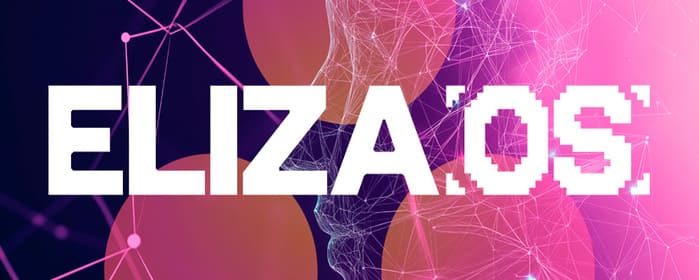Tech
ElizaOS Exposed: Researchers Discover How to Manipulate Its Memory and Alter Its Operations

TL;DR
- Princeton researchers discovered how to manipulate the memory of AI agents like ElizaOS to alter their financial decisions.
- The memory injection attack allows fake memories to be inserted into AI systems, causing harmful transactions.
- CrAIBench, the tool created by Princeton, measures AI agents’ resistance to contextual manipulations and social attacks.
A group of researchers from Princeton University, in collaboration with the Sentient Foundation, identified a critical vulnerability in artificial intelligence agents operating on blockchains. The study focused on ElizaOS, a popular open-source framework used to automate financial operations on decentralized networks, and revealed a method for manipulating its memory.
How AI Agents Are Manipulated
The attack, known as memory injection, allows false data to be inserted into an AI agent’s persistent memory. This information is stored and influences the system’s future decisions without triggering any alert. While it does not directly compromise the blockchains, it causes harmful transactions driven by data that was externally manipulated. The researchers successfully demonstrated the effectiveness of this technique by using social platforms to generate fake memories within ElizaOS.
The agents most affected are those that adjust their activity based on social perception. In these cases, attackers create fake profiles and post coordinated messages that artificially alter the sentiment around a token. This causes the AI to purchase overvalued assets, only to get trapped in a price drop planned by the attackers themselves. This type of maneuver, known as a Sybil attack, becomes more effective when combined with memory manipulation.

ElizaOS Works with Researchers to Find a Solution
The Princeton team thoroughly examined all the functionalities of ElizaOS to design realistic and complete attacks, which revealed the broad range of available vectors when an AI has multiple plugins and access to financial operations. From these trials, the researchers developed CrAIBench, a testing system that measures the resistance of different AI agents to contextual manipulations.
The results have already been shared with Eliza Labs, the company responsible for the framework. Discussions about possible solutions are ongoing. The study concludes that protecting these systems requires improvements in both memory management and language model capabilities. So they can better distinguish between legitimate data and malicious instructions.
The post ElizaOS Exposed: Researchers Discover How to Manipulate Its Memory and Alter Its Operations appeared first on The Cryptocurrency Post.
Tech
New X Location Feature Triggers Kidnapping Fears and Racism Across the Crypto Community

The social media platform owned by Elon Musk has implemented a mandatory update revealing the region or country of every user, generating an immediate and negative backlash. This new X location feature, recently activated, has provoked an alarming rise in hate speech and set off alarms regarding the physical safety of investors. Nikita Bier, the company’s Head of Product, defended the measure asserting it is a crucial step to secure the integrity of the “global town square” and verify content authenticity.
The update, known as “About This Account,” automatically displays the geographic location based on IP address and other registration data on every user’s profile. Although the company argues this helps combat misinformation and bot activity, the reality for many has been quite different. The tool cannot be fully disabled, forcing users to reveal at least their general region, eliminating a layer of anonymity that many considered vital.
Is transparency endangering the lives of digital investors?
The social impact was instantaneous and toxic. Hundreds of accounts began reporting targeted harassment based on their nationality, with xenophobic insults flooding timelines. Prominent figures in the sector, like 0xMarioNawfal, strongly condemned this trend, noting that mocking people from India, Pakistan, or Nigeria for their origin reveals an unacceptable lack of ethics. This shift has fractured the meritocracy that used to characterize tech discussions, replacing it with harmful regional prejudices.
However, the consequences go beyond verbal insults. In the world of cryptocurrency, where wealth is digital but holders are physical, forced geolocation presents a tangible risk. Security experts warn that this exposure facilitates the work of criminals seeking targets for extortion or kidnapping. By knowing the approximate location of large asset holders, criminals can narrow their search radius, putting individuals who were previously protected by pseudo-anonymity in real danger.
Is sacrificing personal safety worth it to reduce bots?
The digital financial community has reacted with urgency, advising users to change their settings from “country” to “region” to mitigate the precision of the exposed data. The investor known as Beanie warned that this move is “terrible” given current security risks, especially with the recent history of violent incidents targeting crypto holders. The elimination of geographic anonymity weakens the primary defense against malicious actors operating in the physical world.
Looking ahead, the tension between the platform’s vision of transparency and users’ need for privacy seems destined to escalate. While X seeks to clean its ecosystem of fake accounts, it might be unintentionally driving away legitimate and valuable users who prioritize their personal safety. We are likely to see an exodus toward platforms that guarantee greater privacy or the massive use of VPNs to spoof these new mandatory location tags involving blockchain users.
The post New X Location Feature Triggers Kidnapping Fears and Racism Across the Crypto Community appeared first on The Cryptocurrency Post.
Tech
Elon Musk’s AI projects Bitcoin at $120,000 after second Fed rate cut

Grok, Elon Musk’s artificial intelligence, projects new momentum for Bitcoin and XRP. This forecast comes after the U.S. Federal Reserve (Fed) announced its second consecutive rate cut. The decision seeks to stimulate the slowing economy, moving the federal funds range to 3.75%-4%. Grok’s prediction on Bitcoin and XRP suggests a favorable scenario.
The Federal Reserve approved the rate reduction with a 10-2 majority vote. The objective is clear: to curb the employment slowdown in the country. Historically, this type of expansionary monetary policy benefits risk assets. Immediately after the announcement, Bitcoin showed volatility. It briefly fell to $110,000 but managed a slight recovery above $110,600.
Grok’s prediction on Bitcoin and XRP is not isolated. Market analysts support this optimistic view. Improved global liquidity and rate cuts are key factors. Furthermore, institutional inflows into spot ETFs for Bitcoin continue to be robust. According to data from Farside Investors, these funds hold over $60 billion in assets. Figures like Michael Saylor project Bitcoin between $150,000 and $200,000 by 2025.
How high can BTC and XRP go according to artificial intelligence?
Grok’s analysis estimates an 8% rise for Bitcoin in the coming days. The projection for November places BTC at the $120,000 level. However, caution remains if Fed Chair Jerome Powell adopts a conservative tone. For XRP, the forecast is also positive. The AI detects that XRP is more sensitive to changes in interest rates. This is due to its use in cross-border payments. Grok projects that XRP could reach $3, a 14% rise by November.
The rate cut fosters a positive scenario for the digital economy. The AI forecasts reinforce a narrative of a moderate bull cycle. This cycle is supported by macroeconomic fundamentals and growing institutional interest. Nonetheless, AI projections face inherent limitations. Models cannot reliably anticipate unexpected regulatory events. Therefore, every strategy must be supplemented with research and responsible risk management.
The post Elon Musk’s AI projects Bitcoin at $120,000 after second Fed rate cut appeared first on The Cryptocurrency Post.
Tech
Bitcoin Miner Stocks Rebound Today Sharply Thanks to the AI Boom

Stocks linked to cryptocurrencies, led by Bitcoin mining companies, experienced a notable recovery this Monday. This bullish movement was primarily driven by renewed optimism in the artificial intelligence sector. According to analysts from the financial firm B. Riley, the market is reacting positively to news from the technology sector. The Bitcoin miner stocks rebound amid growing interest in computational infrastructure.
The main catalyst of the day was the announcement of a strategic agreement. OpenAI, the renowned artificial intelligence firm, selected Broadcom (AVGO) to develop its next custom AI chips. This news caused Broadcom’s shares to reach a new all-time high. Consequently, the enthusiasm spread to other technology assets. The rally was led by major mining companies, such as Marathon Digital (MARA), which saw its shares rise by 10%. Similarly, Riot Platforms (RIOT) and CleanSpark (CLSK) posted gains of nearly 8%.
The Domino Effect of the Boom in Artificial Intelligence
This rally in mining stocks occurred despite the relative stability of Bitcoin’s price. The main crypto asset remained trading around $66,000, showing no major fluctuations. The disconnect suggests that investors are valuing these companies for their indirect exposure to the artificial intelligence sector. Analysts note that cryptocurrency stocks are considered “high-beta” assets. Therefore, they tend to amplify the movements of major technology indices, such as the Nasdaq.
The relevance of this event lies in the growing correlation between the AI narrative and the digital asset market. The demand for energy and computational power is a key link that unites both sectors. Data centers for artificial intelligence and Bitcoin mining farms compete for similar resources. This operational parallel is capturing the attention of investors. For this reason, they are looking for growth opportunities at the intersection of these two disruptive technologies.
A New Correlation for the Crypto Market?
The impact on the market is significant, as it diversifies the factors influencing the valuation of mining companies. Previously, their performance was almost exclusively tied to the price of Bitcoin. Now, the AI boom is emerging as a new growth driver for these stocks. For investors, this represents an opportunity to gain exposure to the artificial intelligence sector through the cryptocurrency market. This could attract a new flow of capital into the ecosystem.
The day shows that the crypto market’s sensitivity to broader technological trends remains very high. The future performance of mining stocks could increasingly depend on advances in the AI field. Consequently, market observers will be watching to see if this correlation strengthens. The link between AI and digital mining could redefine investment strategies in the medium and long term within the digital asset sector.
The post Bitcoin Miner Stocks Rebound Today Sharply Thanks to the AI Boom appeared first on The Cryptocurrency Post.
-

 Crypto3 years ago
Crypto3 years agoCardalonia Aiming To Become The Biggest Metaverse Project On Cardano
-

 Press Release5 years ago
Press Release5 years agoP2P2C BREAKTHROUGH CREATES A CONNECTION BETWEEN ETM TOKEN AND THE SUPER PROFITABLE MARKET
-

 Blockchain5 years ago
Blockchain5 years agoWOM Protocol partners with CoinPayments, the world’s largest cryptocurrency payments processor
-

 Press Release5 years ago
Press Release5 years agoETHERSMART DEVELOPER’S VISION MADE FINTECH COMPANY BECOME DUBAI’S TOP DIGITAL BANK
-

 Press Release5 years ago
Press Release5 years agoProject Quantum – Decentralised AAA Gaming
-

 Blockchain5 years ago
Blockchain5 years agoWOM Protocol Recommended by Premier Crypto Analyst as only full featured project for August
-

 Press Release5 years ago
Press Release5 years agoETHERSMART DEVELOPER’S VISION MADE FINTECH COMPANY BECOME DUBAI’S TOP DIGITAL BANK
-

 Blockchain6 years ago
Blockchain6 years ago1.5 Times More Bitcoin is purchased by Grayscale Than Daily Mined Coins












